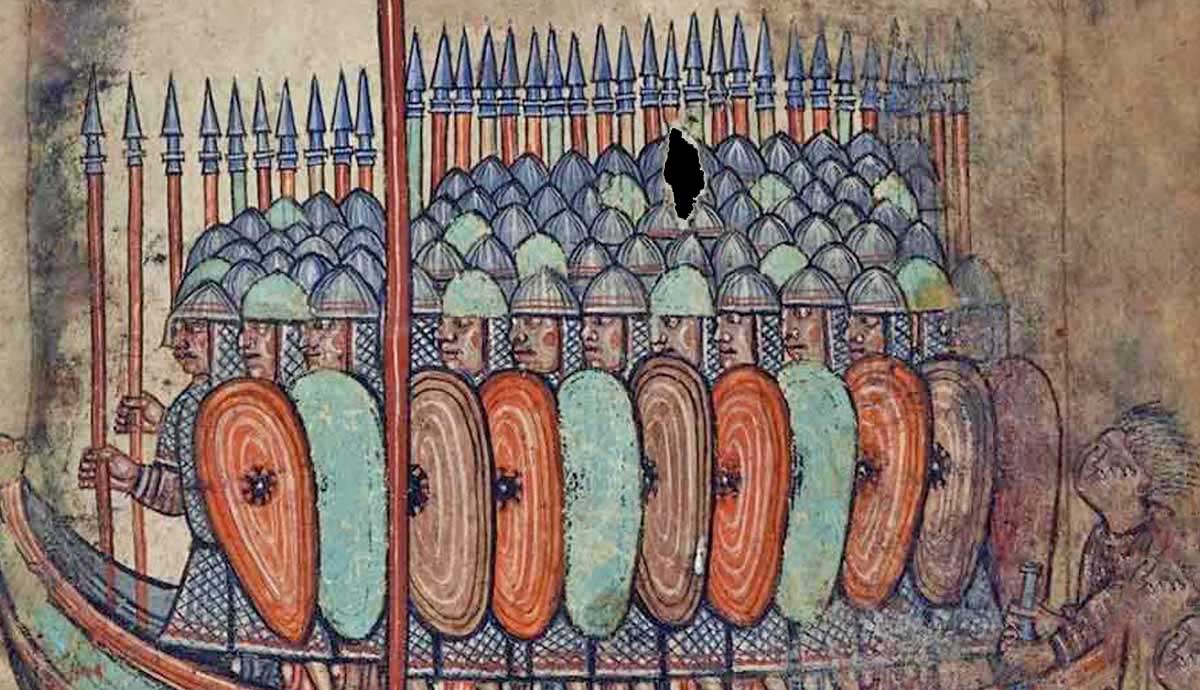What Was the Impact of the Viking Raids on Irish Monasticism?
The earliestViking raids in Ireland profoundly altered Irish monasticism. This change was not drastic but the result of a convoluted series of events involving violence and adaptation that ultimately changed the Irish church forever. Before the Vikings, a seafaring people originally from Scandinavia (also known as Norsemen), arrived in Ireland in 795 CE, the nation was a center of saints and scholars. It also had a rural society that lacked central kings or large towns. In pre-Viking Ireland, local leaders were the main authority.Viking Attacks on Monastic SettlementsSea-faring Norsemen depicted invading England. Illuminated illustration from the 12th-century Miscellany on the Life of St. Edmund (Pierpont Morgan Library). Source: WikipediaNotably, monastic settlements such as Clonmacnoise and Armagh held vast lands and significant amounts of treasured precious objects. For perspective, monks in those centers produced magnificent works of art for their churches that included golden chalices and jeweled shrines. However, the wealthy monasteries were open and undefended, making them easy targets for invaders.Page from the Book of Kells, around 800 CE. Source: Trinity College, IrelandThe Viking Age in Ireland began in 795 CE with an attack on Rathlin Island. In that year, Vikings also raided Iona in Scotland and Lambay Island off the Irish coast. The early raids were fast attacks that targeted valuable items such as gold and silver. The raiders also took people as slaves. After the Vikings killed 68 monks at Iona, the community moved its base to a new monastery at Kells in County Meath, Ireland. The move from Iona to Kells also involved the movement of important unfinished texts that would become the Book of Kells.Events After 830 CERiver Liffey in Dublin. Source: WikipediaThe nature of the raids in Ireland changed substantially around 830 CE when larger and more organized Viking fleets began arriving in Ireland. About 60 ships arrived on the River Boyne in 837 CE. Another fleet of an almost similar number entered the River Liffey in the same year. The fleets were led by powerful warlords such as Turgesius. They advanced deep into Irish territory through the countrys extensive rivers such as the Shannon and the Bann.Eventually, they were able to reach wealthy inland monasteries such as Clonmacnoise that were previously safe from coastal attacks. One major development that occurred in 841 CE was the Vikings establishment of their first permanent fortified naval bases or longphuirt in Ireland. They also built a major camp along River Liffey called An Dubh Linn (Black Pool). Such camps allowed the Vikings to keep their ships safe. They also enabled their raids to become more systematic and organized. This led to the end of the golden age in which monasteries were undefended. Traditional Irish monasticism was definitively over as the threat was now ever-present.How Irish Monasteries Adapt to the Viking RaidsThe round tower at Glendalough, Ireland, is approximately thirty meters tall. Source: WikipediaOver time, Irish monasteries learned to adapt and defend themselves from the constant threat of Viking raids. Notable adaptations over the next century included the construction of tall slender Round Towers or cloicthech which began appearing at major monastic sites from the early tenth century onwards at places like Glendalough and Clonmacnoise. The stone Round Towers stood at around 30 meters high and had a single entrance built several meters above the ground that was only accessible by a wooden ladder. Monks would go inside during an attack, while the towers were used as watchtowers.Their primary purpose was to be a secure stone refuge for the monastic community, and for their most valuable relics and manuscripts. Irish monasteries also began to build their most important churches from stone instead of wood. This made them more resistant to Viking fires. Some monastic communities also built stone enclosures known as cashels around their precincts while others relocated entirely to more defensible inland locations away from the dangerous waterways regularly used by Viking fleets.How Viking Settlers Influenced Irish LifeViking longships.Over the next generations, the Vikings in Ireland evolved from being just raiders into traders and settlers. They also founded Irelands first true towns and added a new urban dimension to Irish life. Their settlements in Dublin, Waterford, Wexford, Limerick, and Cork also grew into major fortified urban centers that drove the economy for the island. This was by connecting the nation to a trade network that stretched from Iceland to Constantinople. Over time, many of the Hiberno-Norse settlers converted to Christianity and their distinct Scandinavian culture began to overlap with Irish culture. The combination led to the creation of a new unique hybrid society. The changes are evident in Christian art where Viking artistic styles like the Ringerike and Urnes styles that started to appear on Irish stone carvings and metalwork.


